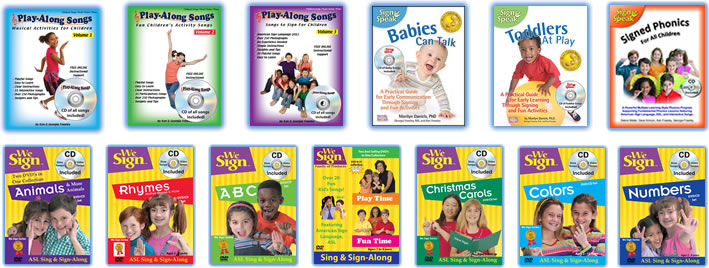
Teaching Children's Songs
Teaching songs to children is made easier with our 12 how to teach children’s songs steps:
- Read, listen, and watch the song first.
- Read the lyrics of the song to gain some understanding of the things children can do and manipulate.
- Read any instructions about presenting and performing the song with children.
- Listen to the song to become familiar with the melody.
- Watch any video demonstration that might be available to see how a song is instructed and performed. All Play-Along Songs are accompanied by FREE ONLINE video support often with additional instruction, insights, and thought on creative manipulation of the songs.
- An example. Watch this demonstration of a wonderful American Camp song that is a full body activity that can become very physical as it gets faster and faster. It is ideal for older age preschool and elementary ages. Note how the song is instructed first and then performed. A Sailor Went to Sea.
- Learn the children’s song first. Learn the melody from the sheet music or recording. Learn how to perform the movements or other activities before introducing it to young children. Another great way to learn songs is through watching it live or on video as you saw in A Sailor Went to Sea.

- Choose age-appropriate songs, actions, and vocabulary. Children respond and have fun with activities they are capable of accomplishing.
- Alter children’s songs as needed. Adapt the movements, signs, and activity to meet the needs and abilities of your children. Here are some suggestions:
- For babies. Short songs combined with simple actions work best. Very young children love to not only listen to their parents or caregivers voice but they also love watching them move. You can also enhance the enjoyment by touching or moving them while singing the song. As they mature, they can begin to do actions on their own. LEARN MORE about using activity songs with babies.
- For toddlers. Simple and repetitive songs where they can move all around or roar like lions are really enjoyed. LEARN MORE about using activity songs with toddlers.
- For older children. Preschool and elementary ages take pleasure in children’s songs that are fun and challenging. The songs can be everything from playful and silly to fun and educational. All of the songs in any Play-Along Songs collection can be used effectively with preschool and elementary children. Keep in mind that you may have to simplify some songs for younger preschool children and engage older ages in creative manipulation of songs. LEARN MORE about using activity songs with preschool children. LEARN MORE about using activity songs with elementary age children.
- Have your children’s attention. Be sure they are focused on you and not distracted for any reason.
- Teach the words, movements and/or concepts (like rhyming) first. Break the instruction into small segments. Demonstrate or explain each segment with the children mirroring what you do.
- Slowly talk, chant or sing the songs a cappella. Everyone will sing or say the song and perform the activity together slowly, stopping if there are any difficult areas that need more work. Pick up the tempo as your children’s ability to participate grows.
- Lead the song at tempo. Once proficiency has been attained, you and your children can now sing and perform along to the recording of the song on a CD.
- Lead all songs with playfulness and enthusiasm. Use exaggerated facial expressions, voice, and movements to keep the activity fun and playful. Children appreciate your zeal.
- Praise and reward all efforts. Your encouragement and support for all your children’s efforts will help them to strive for and succeed in mastering each song’s movements and concepts.
- Repetition. Repeating the song often helps to reinforce the memorization and recall of any song.
- Create a special time for using Play-Along Songs. Having a special time every day for playfully interacting with fun children’s songs helps children develop an enthusiasm for these activities and fosters an appreciation for music
Product Line
